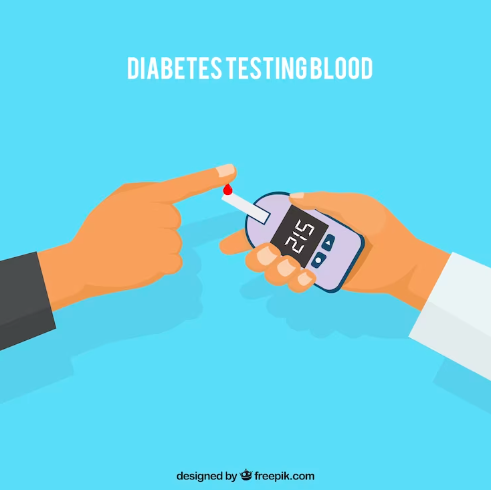Time in range becomes an increasingly important diabetes target
A1C has long been the gold standard for assessing glycemic control in both type 1 diabetes and type 2 diabetes, as well as in diagnosing diabetes and prediabetes. But A1C represents a rolling average of glycemic control over the past 8-12 weeks, while a newer tool, continuous glucose monitoring (CGM), can assess glycemic control in real time.
“Now that we can see the glucose record in detail, we realize that A1C is not the entire picture,” said Revital Nimri, MD, Director of the Scientific and Technology Diabetes Service, The Jesse Z and Sara Lea Shafer Institute for Endocrinology and Diabetes National Center for Childhood Diabetes, Schneid Children’s Medical Center of Israel, Tel Aviv, Israel. “The same A1C can represent enormous differences in glucose and glycemic control. CGM and CGM metrics, including time in range (TIR), are increasingly popular to assess glycemic control in clinical practice and in research, and enable more personalized care.”
Dr. Nimri discussed the role of TIR and other CGM metrics during Time-in-Range – Where are We Headed in 2023? The session can be viewed on-demand by registered meeting participants at ADA2023.org. If you haven’t registered for the 83rd Scientific Sessions, register today to access the valuable meeting content through August 28.
TIR and other CGM metrics can show an individual’s rate of hypoglycemia; predict future severe hypoglycemia; track post-exercise and postprandial glucose excursions; show short-term effects from medication, diet, and lifestyle activities; show within-day and day-to-day fluctuations in glucose levels; detect behavioral patterns; provide new opportunities for data analysis; and much more.
“We have growing evidence to support the beneficial effect of greater TIR on reducing the risk of long-term diabetes complications, and we have consensus standards for using CGM in clinical studies,” Dr. Nimri said. “Depending on the situation, TIR and other CGM metrics can be used along with A1C, and sometimes alone.”
The U.S. Food and Drug Administration (FDA) supports the use of TIR and other CGM metrics.
“There is very robust evidence that CGM can improve glycemic control,” said Patrick Archdeacon, MD, Deputy Director, Division of Diabetes, Lipid Disorders and Obesity, FDA. “And there is increasing evidence that CGM can improve outcomes in patients who are not using insulin. We need to do a better job of incorporating CGM in clinical trials.”
In May, the agency issued a draft guidance for Diabetes Mellitus: Efficacy Endpoints for Clinical Trials Investigating Antidiabetic Drugs and Biological Products. The draft is open for comments until August 24.
The FDA encourages sponsors to develop agents to reduce hyperglycemia with low hypoglycemia or as an adjunct to other antihyperglycemic agents to reduce the risk of hypoglycemia. Self-monitoring blood glucose devices are acceptable to assess hypoglycemia, but CGM systems are more likely to limit bias and capture events in patients with hypoglycemia unawareness.
Using TIR and other CGM metrics can enhance current models of care that rely on quarterly visits with A1C checks. CGM is not, however, a panacea for glycemic control. Recent blinded studies show that many people with diabetes average as few as eight or nine hours per day in range.
“Managing diabetes is not just about food and medicines that affect glucose,” said Daniel DeSalvo, MD, Type 1 Diabetes Clinic Lead, Director of Strategic Collaboration for the Texas Children’s Diabetes & Endocrine Care Center, and Diabetes Transition Clinic Co-Lead at Texas Children’s Hospital. “There are a myriad of factors. CGM can be a heuristic learning tool that helps patients learn cause and effect in their own daily lives and make adjustments to improve TIR. CGM can help us move away from the current model of wide glycemic variability to a narrow range.”
CGM is a useful tool to personalize TIR goals, Dr. DeSalvo continued. Cost and coverage are important considerations, but being able to view TIR updates on a smartphone can help inform and guide daily actions and decisions.
Multiple programs integrate CGM data into the electronic health record (EHR) and clinical practice. The FDA has already approved one clinical decisions support system (CDSS) to provide person-specific information, intelligently filtered and presented to clinicians, to enhance clinical decision-making.
“During COVID, we used endo.digital as our standard approach,” Dr. DeSalvo said. “Treatment plans are automatically shared with the patient via the mobile app. Similar systems are currently seeking approval.”
A TIR-focused approach improves the patient experience of care, improves health at the population level, and reduces the per capita cost of care, he said. TIR-focused care also offers new revenue opportunities with existing billing codes for telehealth, virtual check-ins, remote patient monitoring, and chronic care management.
CGM is just as compelling from the patient perspective.
“People with diabetes want to feel safer,” explained patient advocate Kelly L. Close, MBA, Founder and President of Close Concerns, a diabetes-focused health care information firm. “Just as importantly, we want to be safer. We want to see our efforts yield results. CMG metrics are helping us live longer and have better lives by avoiding excursions into hyper- and hypoglycemia.”
A quarter of patients living with diabetes have no TIR goal, she said, while 57% have a personal TIR goal of 80% or more.
She predicted significant growth in CGM use. There are an estimated 6.7 million CGM users worldwide, an eightfold increase from 2017. But there are about 70 million people around the world taking insulin, all of whom could benefit from CGM.
“For anyone on insulin or sulfonylureas, CGM is the standard of care,” she said. “Every 5% decrease in TIR is associated with a 16% increased risk in developing diabetic retinopathy. Using CGM with GLP-1s (glucagon-like peptide-1 receptor agonists) and SGLT2s (sodium-glucose cotransporter-2 inhibitors) can improve glucose management and help protect against hypoglycemia if you are also on insulin or a sulfonylurea. The impact of TIR has barely scratched the surface of what is possible.”







